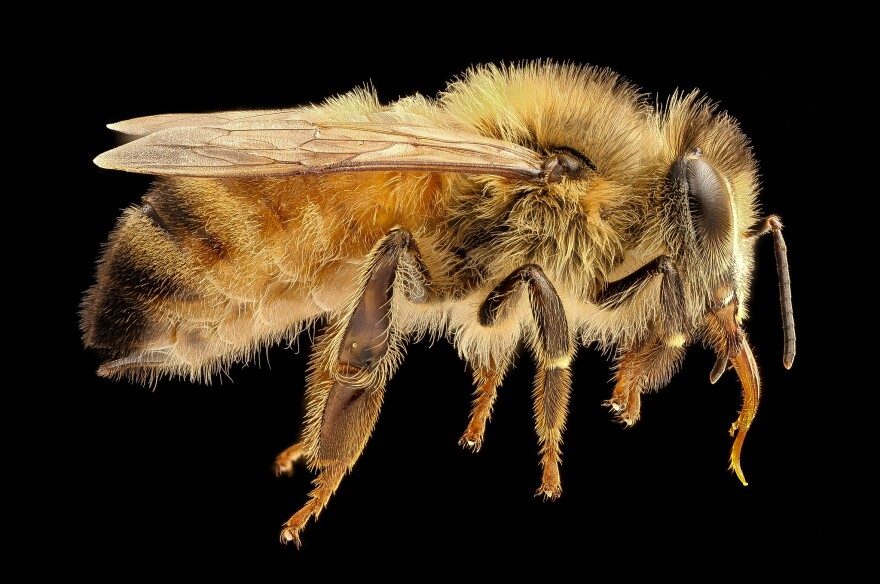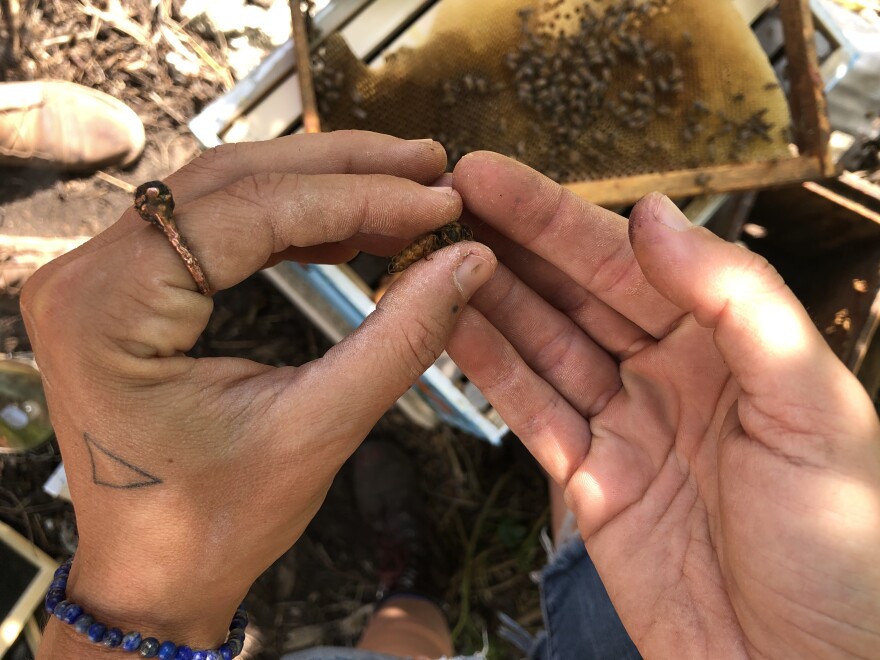To save their bees from winter losses, some small-scale, western Massachusetts beekeepers are using innovative methods. And they're getting promising results.
Dan Conlon owns and runs Warm Colors Apiary in South Deerfield, Massachusetts. He said he's been keeping bees for more than 50 years, and as a professional for 20.
Like all beekeepers, Conlon has experienced the problems that are killing bees in record numbers: pesticides, lack of nutrition, various diseases and climate change.
The biggest threat to honeybees is a parasitic mite commonly referred to as varroa.
A varroa infestation does not directly kill a hive, but it makes bees weaker and more susceptible to death by illness and disease.

To fight these mites, Conlon has been working with the U.S. Department of Agriculture to selectively breed honeybees from Russia — because Russian bees have a special skill.
“They would remove mites from the hives,” Conlon said. “They would actually sense pupae under the cappings of wax when they were infested with mites, and remove those before the mites matured and became reproductive mites.”
This behavior is called the "hygiene trait." The USDA has been breeding the bees that clean the best in order to amplify the trait.

The USDA breeding program started with Thomas Rinderer, who is now retired. When varroa arrived in the U.S. in the 1980s, Rinderer's team heard Russian honeybees were better at fighting off varroa than U.S. honeybees.
“It turned out that in the middle of the 1800s, Russians moved Apis mellifera honeybees — the honeybees that we have — into the far east of Russia, into the range of Apis cerana — the natural host of varroa — and hence, of course, into the range of varroa,” Rinderer said.
Russian honeybees had been living with varroa for 100 years, which is how they evolved the hygiene trait long before other honeybees.
After years of measuring mite counts and careful breeding at apiaries like Warm Colors, the program at the USDA has made Russian honeybees much better at combating mites.
“Our initial tests were that Russian honeybees maintained about, or at their maximum, had about half the number of varroa mites as Italian colonies, and now I think that that’s vastly reduced,” Rinderer said. “It’s down to a quarter, or perhaps even less.”

Conlon's apiary in South Deerfield is a testament to this improvement. While small-scale New England beekeepers have lost around 40 percent of their bees in recent winters, Conlon has lost 20 percent or less in each of the last three.
Angela Roell has been beekeeping for eight years, and they use a different approach to combat varroa at the apiary they manage, Yard Birds.
To strengthen the bees, Roell goes on a road trip.
“I take them down to south Florida, and I try to catch what’s called the Brazilian Pepper nectar flow in the early spring, which in Florida starts in February,” Roell said. “We get sort of a jump start on the year.”


Roell’s bees have roughly half Russian DNA, and in recent winters they have seen much smaller losses than the average small New England beekeeper.
Both Conlon and Roell agree there is another difficult problem beekeepers are facing: other beekeepers.
Because bees are flying insects, their mating is very hard to control. When a Russian bee breeds with a non-Russian bee, it weakens the hygiene trait, and makes the next generation worse at cleaning off varroa mites.
“If I’m doing all that work, but my neighbor has 100 hives, and they’re all just, like, Italian honeybees with no varroa resistance,” Roell said, “then I’m basically just bailing out a boat with a huge hole in the bottom of it.”
That's part of the reason why Roell doesn't like “save the bees” rhetoric.
“The idea that we just buy a hive, and we put that hive in our yard, and we’re saving the bees, is, I think, a really challenging problem in the industry,” Roell said.
Instead of beekeeping as a hobby, beekeepers say people should reduce pesticide use, plant wildflowers, and support local honey producers.












